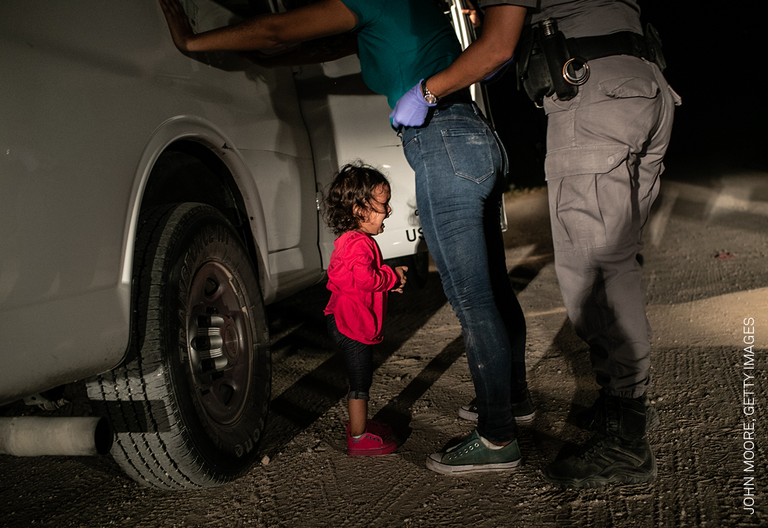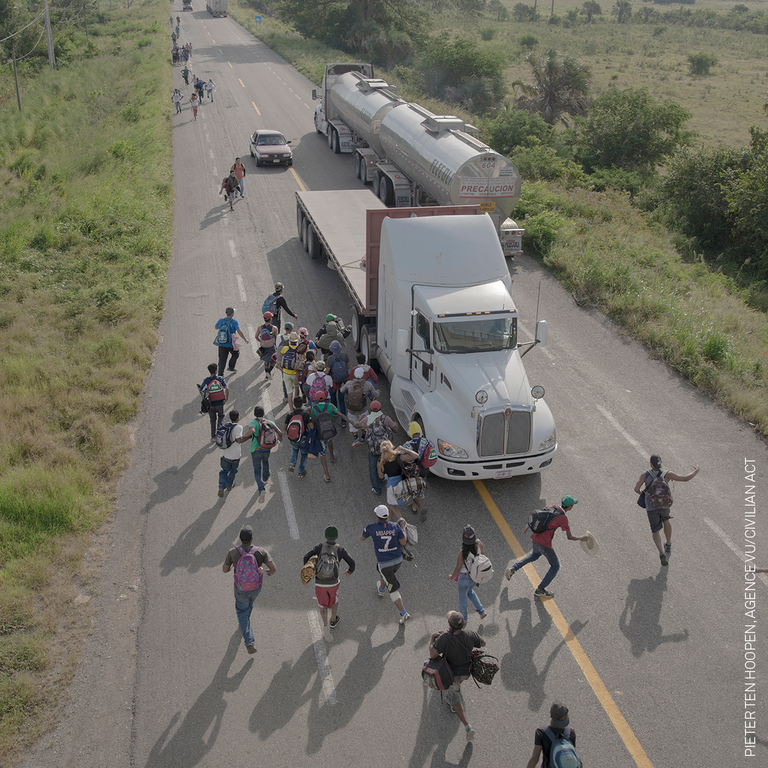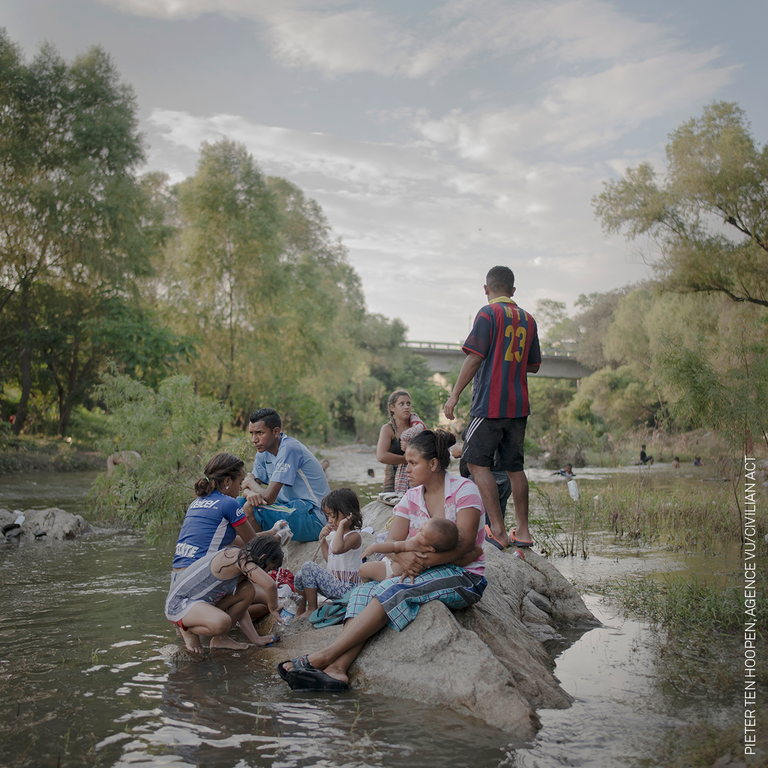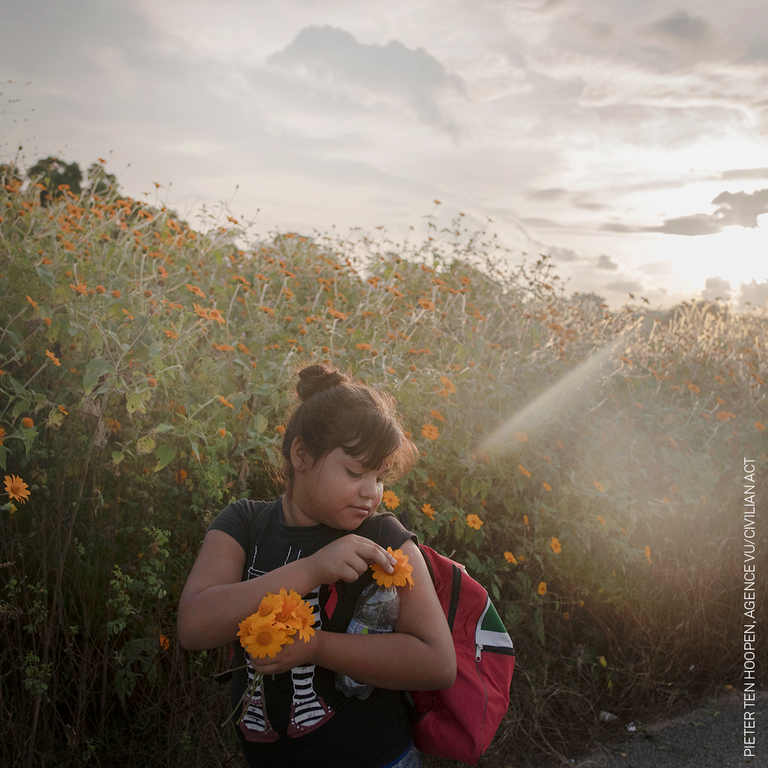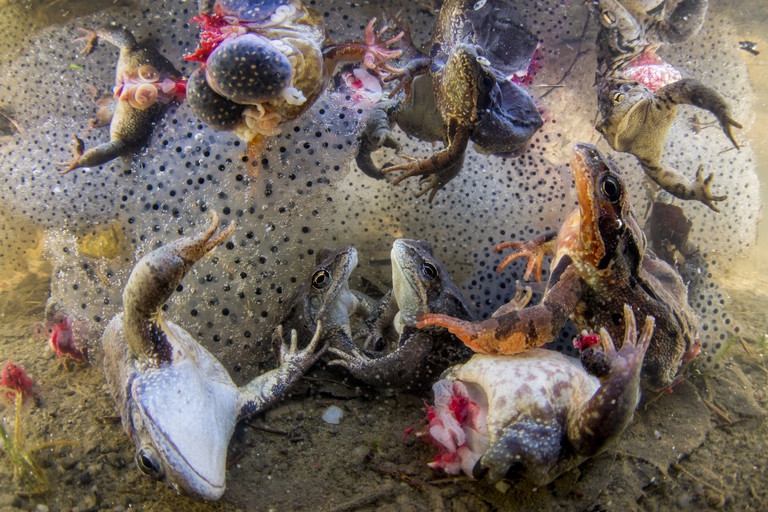
The Louise Michel is the humanitarian rescue ship saving lives in the Mediterranean. Financed by the artist Banksy, it has found a safe port in Sicily.
The winners of the World Press Photo 2019 tell the stories of migrants in the Americas. From the iconic image of a girl crying on the border between Mexico and the United States to the thousands of people walking from Honduras towards a better life.
The photograph of a girl crying while her mother is being searched on the border between Mexico and the United States, captured by photographer John Moore, is the World Press Photo of the Year 2019, the world’s most prestigious photojournalism contest.
I think that this image touched many people’s hearts as it did mine because it humanized a larger story.John Moore, World Press Photo of the Year winner
The girl is Yanela Sanchez, of Honduran origins, and the image captures the moment she and her mother Sandra Sanchez have been detained by US border officials in Texas, on 12 June. Yenela and Sandra were among the families that travelled hundreds of kilometres and crossed Mexico’s Rio Grande to reach the United States and seek asylum.
Their story is part of the zero tolerance policy of the Trump administration towards immigrants on American borders, according to which migrants caught entering the country could be criminally persecuted. This kind of approach has resulted in numerous arrests and children being separated from their parents, sent to detention facilities. These facts, also thanks to this picture that went viral, have generated a global outcry that led the US administration to reverse the policy on 20 June 2018. The photographer behind the image is John Moore, a correspondent for the Getty Images photo agency and specialised in reportages on immigration and border issues since 2008.
This year’s edition of the contest has a new prize, the story of the year. The winner is photographer Pieter Teen Hoopen with his reportage named The migrant caravan. His work as well is about the phenomenon of migrants trying to reach the borders of the United States from Central America, fleeing repression, poverty and violence in search of a better life. This caravan of people drew media attention in October 2018 as it became the largest in recent memory.
I wanted to cover what it means to be on the road to a new life – or what people hope to become a new life. I wanted to focus on the human aspects, on relations between the people and how they handle it.Pieter Ten Hoopen, World Press Photo Story of the Year winner
The caravan, which left San Pedro Sula, Honduras, on 12 October, drew people also from other countries like Nicaragua, El Salvador and Guatemala, reaching 7,000 travellers. Travelling as a group was a fact of security as many people disappeared or were kidnapped in the past. This photographic story also tells us the gruelling conditions of the journey: people walked up to 30 kilometres every day, in temperatures exceeding 30 degrees, a fact that made them leave at 4 o’clock in the morning to avoid the heat.
The other categories of the contest, organised annually by the World Press Photo foundation, are: Contemporary issues, Environment, General news, Long-term projects, Nature, People, Sport, and Spot News.
As of 12 April, the winners of the 62nd edition of the Wold Press Photo, chosen among 80,000 pictures by nearly 5,000 photographers, will be exhibited in Amsterdam, where the foundation is based, and then will embark on a world tour: 100 cities in 45 countries.
Siamo anche su WhatsApp. Segui il canale ufficiale LifeGate per restare aggiornata, aggiornato sulle ultime notizie e sulle nostre attività.
![]()
Quest'opera è distribuita con Licenza Creative Commons Attribuzione - Non commerciale - Non opere derivate 4.0 Internazionale.
The Louise Michel is the humanitarian rescue ship saving lives in the Mediterranean. Financed by the artist Banksy, it has found a safe port in Sicily.
Venezuelan refugees are vulnerable to the worsening outbreak in South America: while coronavirus doesn’t discriminate, it does affect some people more than others.
In the midst of India’s coronavirus lockdown, two dozen people lost their lives in a desperate bid to return home: migrant labourers forced to leave the cities where they worked once starvation began knocking at their doors.
Behrouz Boochani returned to being a free man during the course of this interview. The Kurdish writer was imprisoned by the Australian government in Papua New Guinea for six years.
The Global Compact for Safe, Orderly and Regular Migration was signed by 164 nations in Marrakech. This is what the non-binding agreement that encourages international cooperation stipulates.
The Semìno project is a journey of discovery through different countries’ food habits, offering migrants employment opportunities and allowing us to enjoy the properties of vegetables from all over the world.
Travelling across the new route used by migrants to cross the Balkans and reach Trieste in Italy, a reportage that documents the social, economic and political changes of the countries along the way.
The countries hosting the most refugees aren’t the wealthy, Western ones. An overview by NGO Action Against Hunger reminds us that refugees and internally displaced people are far from being safe.
The solar plant in Jordan’s Azraq refugee camp has started to produce energy, allowing Syrian refugees in the camp to have electricity in their tents. It’s the world’s first refugee camp to be powered by renewable energy: a 2MW plant managed by the UNHCR and financed thanks to the Brighter Lives for Refugees campaign launched
